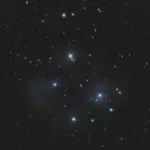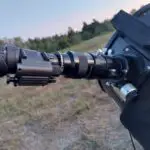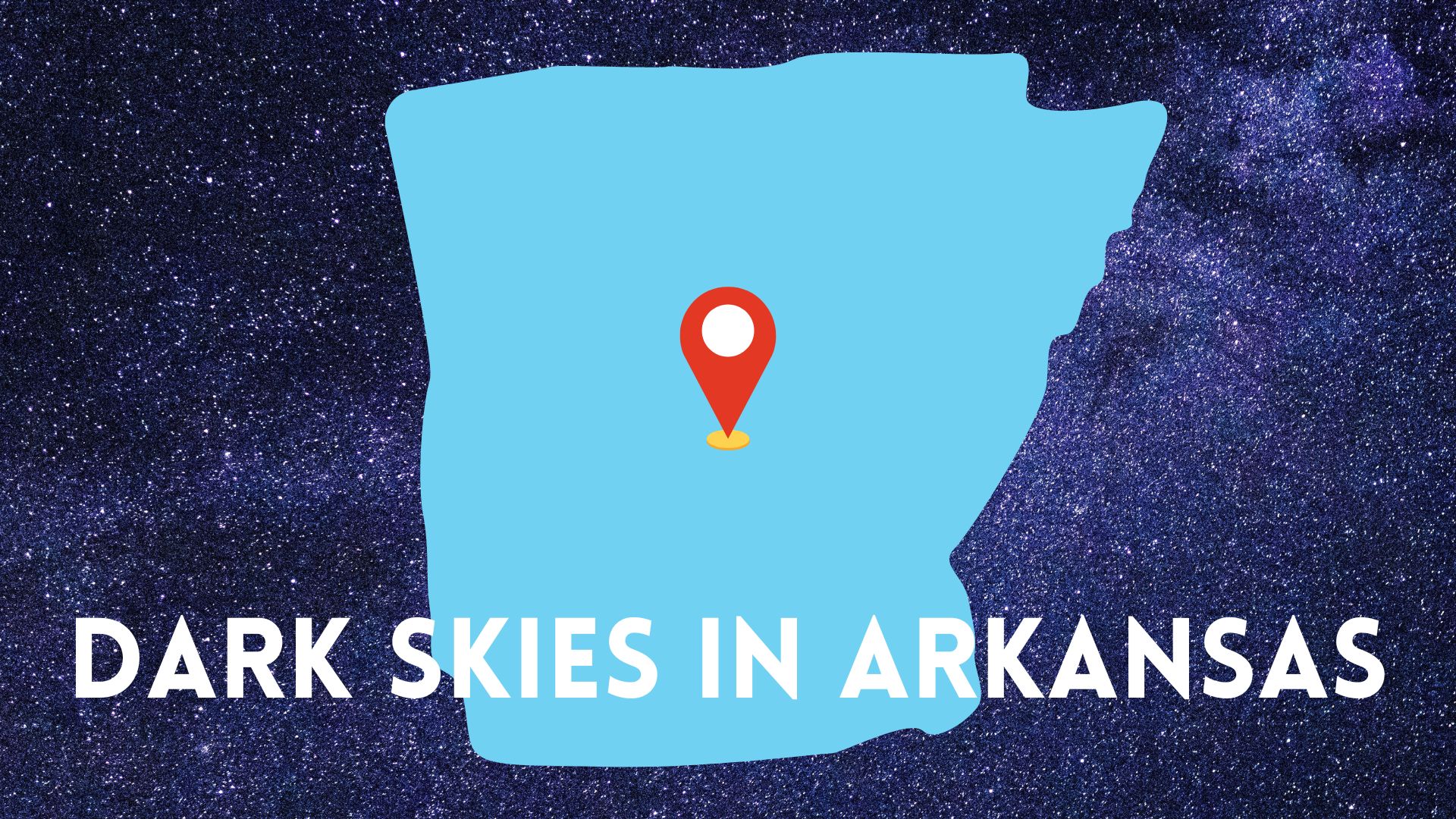The Horsehead Nebula is a dark nebula located in Orion, it looks like a shadow against an illuminated background.
The Horsehead Nebula is 13 light years across and is located in the Orion molecular cloud complex located approximately 1,344 light years away.
This equals over 70 trillion miles across.
A craft traveling at the rate of Voyager 1 would take over 5,000 years to travel across the Horsehead Nebula.
The object itself is close to 1,500 light years away within that cloud.
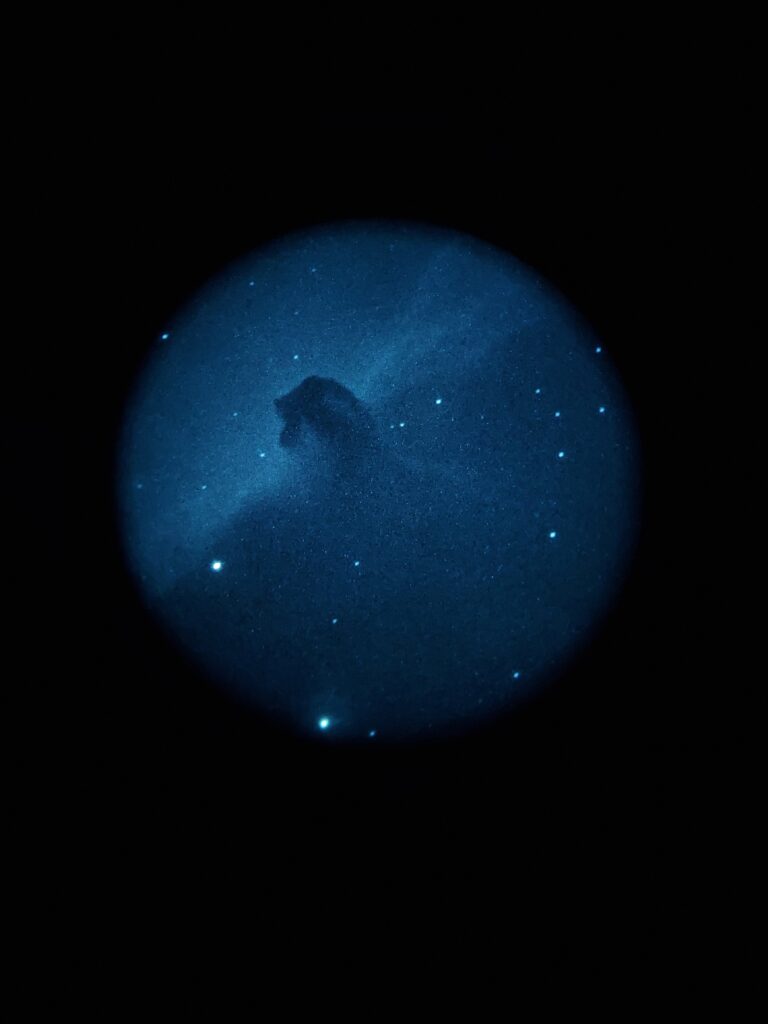
The size and magnitude of the Horsehead Nebula is almost incomprehensible. The object is three times as large as the distance from earth to the nearest galaxy.
William Hertschell is credited with discovering many objects in his publication of “The Construction of the Heavens” in 1811, but the Horsehead Nebula was not confirmed to be one of his vaguely described objects.
The nebula was discovered on a photographic plate by Willimena Flemming in 1888 at the Harvard College Observatory. Wilhelmina was a human computer who was cataloging objects as part of the research taking place at the college in those years.
The object was also cataloged as Barnard 33 by EE Barnard.
However the object was not named at that time. In 1922 a book called Astronomy for Young Folks by Isabelle Lewis called the object the ‘dark horse nebula’ which is a great name and by the 1920s the object was commonly called the horsehead.
I love “The Dark Horse Nebula” though and I think we should go back to that from here on out!
The Horsehead Nebula is often observed with the Flame Nebula, they are often viewed and photographed as a pair.
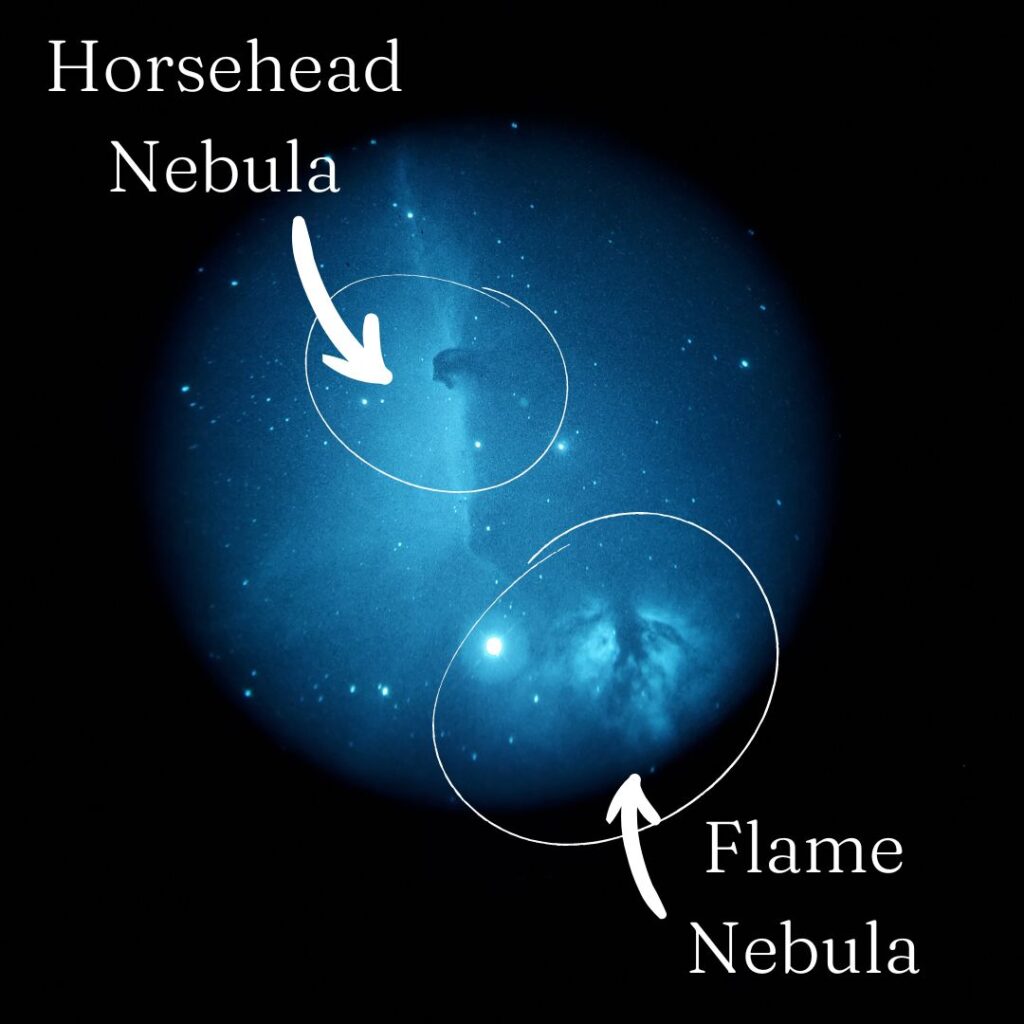
Observing the Horsehead Nebula
Finding the Horsehead Nebula is not very difficult as it is located within Orion, one of the most easily recognizable constellation.
Can you see the Horsehead Nebula without a telescope?
The Horsehead Nebula is not visible without a telescope, in fact it is difficult to see with a telescope unless the weather conditions are excellent.
The Horsehead is just too small and too dim to make out without high power telescopes and clear skies.
I have seen the Horsehead Nebula with a night vision tube and hydrogen alpha filter without a telescope. The object appears very small without magnification, but you can add a 3x magnifier to a night vision device for more observations.
Observing the Horsehead Nebula with a Telescope
The Horsehead Nebula is easy to locate within the Orion constellation. This is one of the few objects that I can find without my go-to computer on my computer!
It is located in the three stars of Orion’s Belt, under the star Alnitak.
It is important to have sufficient aperture to see the Horsehead Nebula. I use an Orion XX16G 16 inch refractor telescope, but it is possible to see it with a smaller 10 inch telescope.
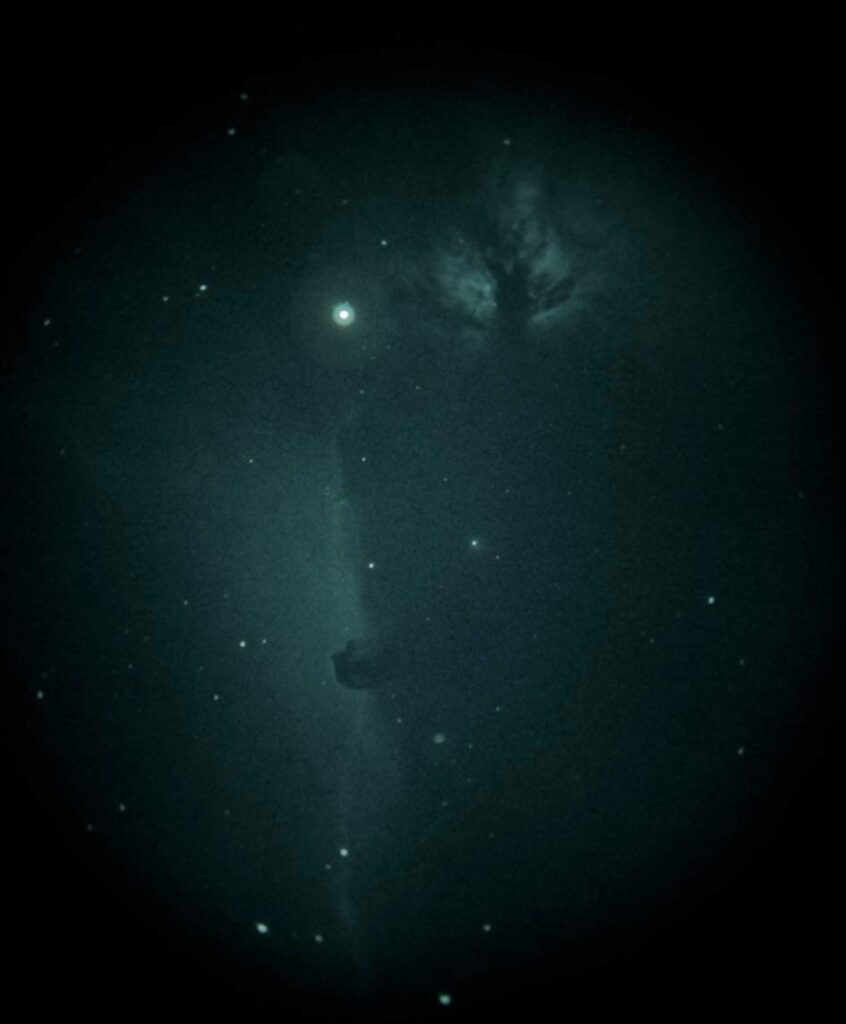
My image is flipped because I use a reflector telescope.
I generally recommend that hobby astronomers buy as much aperture as they can afford. A 10 inch Dobsonian Reflector can get impressive views and is an excellent choice for a beginner.
If you need more reasons to upgrade to a 10 inch Dob, this article describes all the objects you can see with this telescope.
If you live in very dark skies you will need less aperture to see these distant dim objects.
Choose a night with excellent transparency to go after the Horsehead Nebula.
Transparency is very important when evaluating the conditions for observing the Horsehead Nebula, don’t worry about seeing.
Transparency is most important because it is a measure of how clear the sky is, this allows viewers to see more detail in dim objects.
Seeing refers to how stable the sky is, or how much movement of the atmosphere is happening. This distorts some objects that have less defined structure like nebulae.
You want to have about 5 mm exit pupil for this object.
Use a low power, around 20 or 30 mm, whichever is available and comfortable for you.
You will need a filter to be able to see this object. I recommend a Hydrogen Beta filter.
The Hydrogen Beta filter is also sometimes referred to as the Horsehead filter because it provides more contrast when viewing the Horsehead Nebula. It is different from a Hydrogen Alpha filter because it isolates a different part of the light spectrum.
The hydrogen beta filter centers on green light, which is easier for our eyes to see so it makes nebulae really stand out when viewed visually.
You can see the Flame Nebula without a filter. This is located right next to Alnitak, be sure to exclude the bright star from your field of view to be able to make out this impressive nebula.
Can I see color in the Horsehead Nebula?
The Horsehead Nebula is a dark nebula and does not have any visible color. It will almost look like a shadow.
Even in the best, long exposure photographs the Horsehead Nebula does not have color.
The sky around the Horsehead Nebula can have some color and you may see the color in images that have been captured with telescopes. The color will not be visible to the human eye and can only be captured by long exposure photographs.
The eye needs light to make out color even in objects that do contain color. This is what makes it difficult to see color through a telescope.
The bright colorful objects that you see in photographs are the result of long exposure photographs that stack the light emitted over several minutes or hours to produce a colorful image. Some are also edited to add color.

